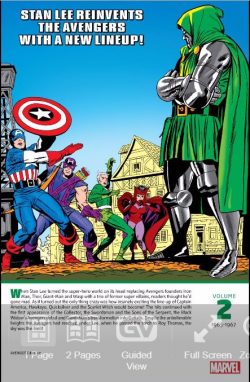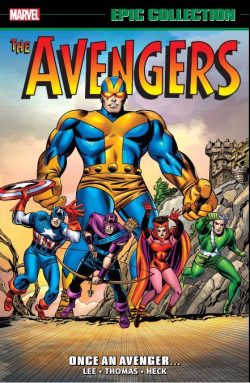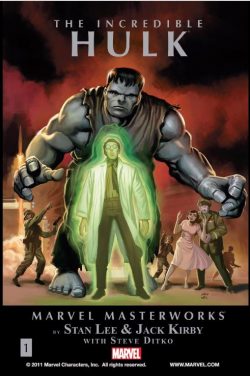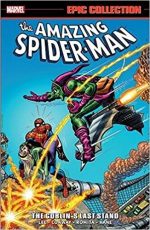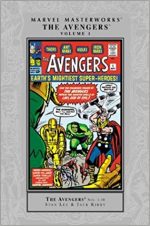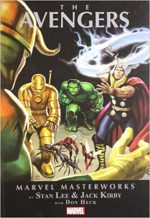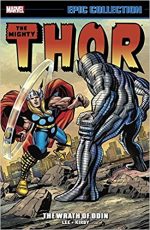
By Chris Claremont, Simon Furman, Jim Shooter, George Pérez, Bob Layton, David Michelinie, Jim Mooney, Carmine Infantino, Dave Cockrum, Mike Vosburg, Mike Gustovich, Michael Golden, David Ross & various (Marvel)
ISBN: 978-0-7851-9575-7
Until relatively recently American comics and especially Marvel had very little in the way of positive female role models and almost no viable solo stars. Although there was a woman starring in the very first comic of the Marvel Age, Invisible Girl Susan Storm took years to become a potent and independent character in her own right. They’ve come a long way since then…
Ms. Marvel launched in her own title, cover-dated January 1977. She was followed by the equally copyright-protecting Spider-Woman in Marvel Spotlight #32 (February 1977, and securing her own title 15 months later) and Savage She-Hulk (#1, February 1980). Then came the music-biz sponsored Dazzler who premiered in Uncanny X-Men #130 the same month, before inevitably graduating to her own book.
Once upon a time Ms. Marvel was Carol Danvers, a United States Air Force security officer. She was first seen in Marvel Super-Heroes #13 (March 1968): the second episode of the saga of Kree warrior Mar-Vell AKA Captain Marvel, who had been dispatched to Earth as a spy after the Fantastic Four repulsed the alien Kree twice in two months…
That series was written by Roy Thomas and illustrated by Gene Colan with the immensely competent Carol perpetually investigating Mar-Vell’s assumed and tenuous cover-identity of Walter Lawson for many months.
This was until Danvers was collateral damage in a devastating battle between the now-defecting alien and his nemesis Yon-Rogg in Captain Marvel#18 (November 1969).
Caught in a climactic explosion of alien technology, she pretty much vanished from sight until revived as and in Ms. Marvel #1 (January 1977), heralding a new chapter for the company and the industry…
This second sturdy hardcover volume (or enthralling eBook if you prefer), collects Ms. Marvel volume 1#15-23, relevant portions of Marvel Super-Heroes Magazine #10-11, Avengers #197-200, Avengers Annual #10 and material from Marvel Fanfare #24, circuitously spanning March 1978 to October 1992, and leads off with an effusive Introduction from latter-day Danvers writer Kelly Sue DeConnick before the game-changing dramas commence…
Never having fully recovered from her near-death experience, Danvers had left the military and drifted into writing, slowly growing in confidence before relocating to New York City to work for publisher J. Jonah Jameson on his new project Woman Magazine.
During this time Carol learned that she had gained Kree-based abilities, psychic powers and partial amnesia: creating the role of Ms. Marvel without her own knowledge. Eventually her personality split was healed and she became a fully conscious and ferociously competent costumed champion…
With Chris Claremont scripting and Jim Mooney & Tony DeZuñiga providing the art, ‘The Shark is a Very Deadly Beast!’ opens this edition as the two-fisted titan clashes with undersea villain Tiger Shark. The action begins after Carol stumbles over him abducting the Sub-Mariner‘s teenaged cousin Namorita. Despite a brief side trip to Avengers Mansion, only Ms. Marvel is on hand to provide succour in cataclysmic concluding ‘The Deep Deadly Silence!’ (inked by Frank Springer).
‘Shadow of the Gun!’ (Mooney & DeZuñiga) then enhances the X-Men connection by introducing shape-shifting mutant Mystique in a raid on S.H.I.E.L.D. to purloin a new super-weapon which then sees impressive service in #18’s ‘The St. Valentine’s Day/Avengers Massacre!’ (inked by Ricardo Villamonte): a blockbuster battle featuring the beginnings of a deadly plot originating at the heart of the distant Kree Imperium.
The scheme swiftly culminates in ‘Mirror, Mirror!’ (art by Carmine Infantino & Bob McLeod) as the Kree Supreme Intelligence attempts to reinvigorate his race’s stalled evolutionary path by kidnapping Earth/Kree hybrid Carol Danvers. However, with both her and Captain Marvel hitting hard against his emissary Ronan the Accuser, eventually the Supremor and his plotters take the hint and go home empty-handed…
Ms. Marvel #20 highlights a huge makeover as Danvers dumps her Mar-Vell-inspired uniform and finally finds her own look and identity in ‘The All-New Ms. Marvel’ courtesy of Claremont, Dave Cockrum & Bob Wiacek.
Here the utterly re-purposed hero tackles a hidden kingdom of predatory, intelligent, post-atomic dinosaurs infesting the American deserts, leading to a catastrophic clash with ‘The Devil in the Dark!’ (inked by Al Milgrom) in the following issue.
Now one of the most hands-on, bombastic battlers in the Marvel pantheon, Ms. M is more than ready for a return match with Death-Bird in ‘Second Chance!’ (art by Mikes Vosburg & Zeck) but thrown for a total loop in her personal life after being fired from Woman Magazine.
All these bold changes came too late as the series’ dwindling sales had earmarked it for cancellation. ‘The Woman Who Fell to Earth’ (inked by Bruce D. Patterson) resolves a long-running plot thread involving the disappearance of old friend Salia Petrie in a tale guest-starring the time-travelling Guardians of the Galaxy, just in time for the end of the road.
The series stopped there but two more stories were in various stages of preparation. They eventually saw print in 1992 (the Summer and Fall issues of oversized anthology publication Marvel Super-Heroes Magazine #10-11). Here they are presented in an originally untitled yarn dubbed ‘Sabretooth Stalks the Subway’: a ferocious fight against the feral mutant maniac by Claremont & Vosburg, followed by ‘Cry, Vengeance!’ (Claremont, Simon Furman, Vosburg & Mike Gustovich) as Ms. Marvel, now a card-carrying Avenger, faces off against Mystique and her Brotherhood of Evil Mutants.
This tale incorporates an additional section explaining how Carol is later attacked by young mutant Rogue, permanently loses her powers and memory and is eventually reborn as the cosmic-powered adventurer Binary: which is all well and good but somewhat takes the punch out of the later tales in this collection…
Relegated to an ensemble role in the Avengers, Danvers’ life took a strange and disturbing turn in Avengers 197-199 (July to September 1980 and represented here by pertinent extracts from those issues).
Written by David Michelinie with art from Infantino & Brett Breeding and George Pérez & Dan Green, these snippets follow a strange and terrifyingly rapid transformation as Carol finds herself impossibly pregnant and bringing an unknown baby to term in a matter of days…
The mystery is solved in ‘The Child is Father To…?’ (Avengers #200, October 1980 by plotters, Jim Shooter, Pérez & Bob Layton, scripter Michelinie, illustrated by Pérez & Green). The baby is born and hyper-rapidly matures as time goes wild, with different eras overwriting the present. The unearthly child begins building a machine to stabilise the chaos but the heroes misunderstand his motives.
“Marcus†claims to be the son of time-master Immortus, trying to escape eternal isolation in other-dimensional Limbo by implanting his essence in a mortal tough enough to survive the energy required for the transfer.
Literally reborn on Earth, his attempts to complete the process are foiled by the World’s Most Confused Heroes and he is drawn back to his timeless realm. Carol, declaring her love for Marcus, unexpectedly goes with him…
Ms. Marvel only plays a peripheral role in ‘By Friends… Betrayed!’ (Avengers Annual #10 (1981, by Claremont, Michael Golden & Armando Gil), as powerless, amnesiac Carol is rescued from drowning by Spider-Woman, prior to Mystique launching an all-out attack on the World’s Mightiest Heroes whilst attempting to free the Brotherhood from custody.
In that attack Danvers’ mind and abilities are taken by power-leaching mutant Rogue, seemingly ending her adventuring life, and in the aftermath, the Avengers learn the horrific truth of her relationship with Marcus and their part in his doom…
One final sentimental moment comes with Claremont, David Ross & Wiacek’s ‘Elegy’ (Marvel Fanfare #24, January 1986) as Carol – now high-energy warrior Binary – returns to Earth to catch up with old friends and learns of the tragic death of Captain Mar-Vell…
Extras in this stellar compendium include a full cover gallery, a Ross alternative cover; ‘The RE-Making of Ms. Marvel’ promo article from F.O.O.M. #22, house ads for her 1978 makeover relaunch and biographies of all the creators involved.
Always entertaining, often groundbreaking and painfully patronising (occasionally at the same time), the early Ms. Marvel, against all odds, grew into the modern Marvel icon of capable womanhood we see today.
These stories are a valuable grounding of the contemporary champion but also still stand up on their own as intriguing examples of the inevitable fall of even the staunchest of male bastions – superhero stories…
© 1978, 1979, 1981, 1992, 2014 Marvel Characters, Inc. All rights reserved.

